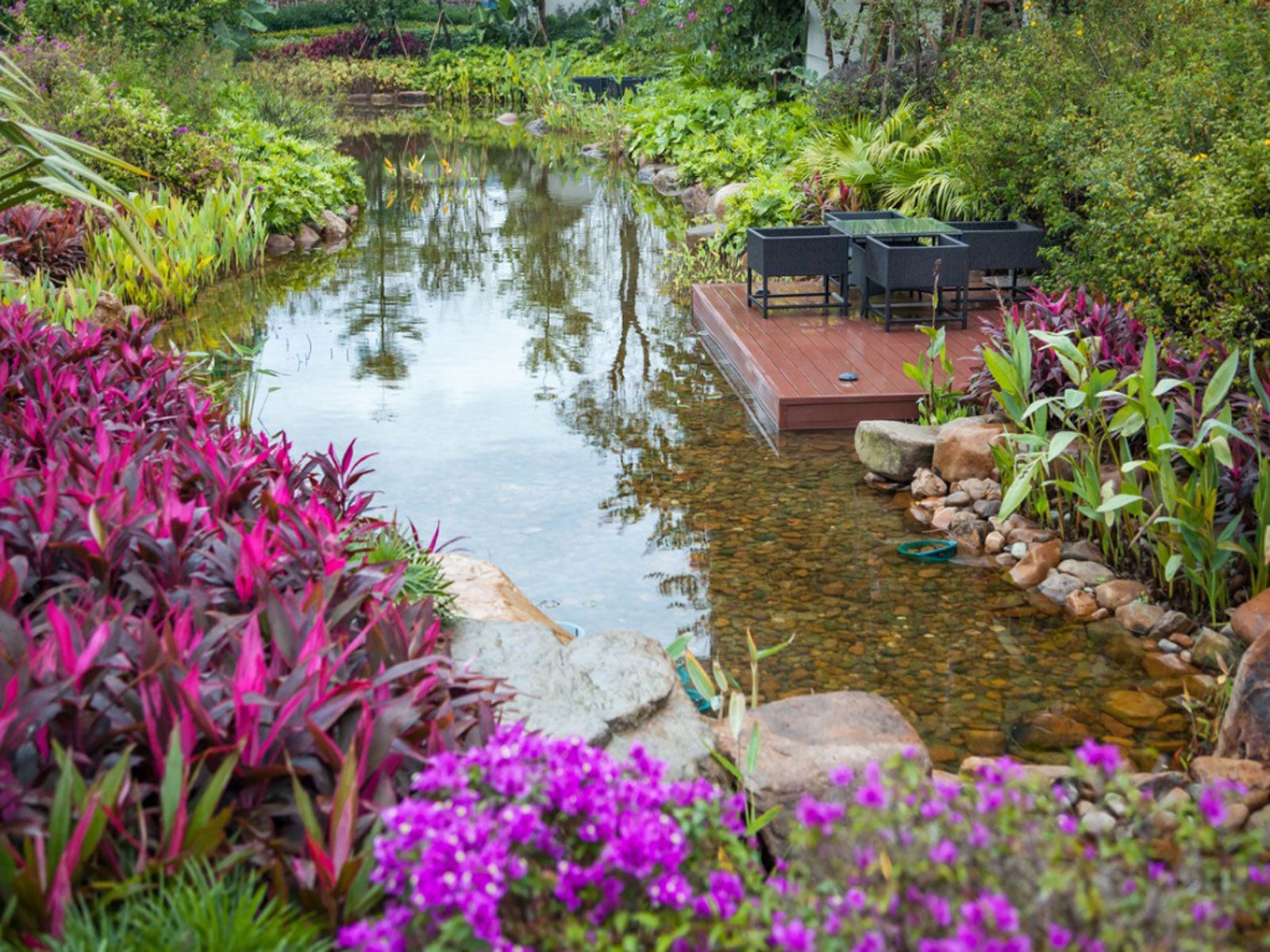Pondscaping In The South – Choosing Plants For A Southeast Pond

southern pondscape
(Image credit: rodho)

By
Mary H. Dyer
last updated
in How-to
Plants for a pond increase oxygen in water, thus providing a cleaner, healthier place for fish and other aquatic life including birds, frogs, turtles, and many important insect pollinators. Pondscape plants also absorb excess phosphorus and nitrogen in the water. Read on for selecting pond plants in the southeastern U.S. region.
Plants for A Southeast Pond
Ideally, a plan for pondscaping in the South should include a variety of plants. Here are a few beautiful pondscape plants to consider.
- Duck potato (Sagittaria lancifolia): You may also know this plant as Katniss. Its unusual name is derived from the ducks that feed on its stems, seeds, and potato-like root structures. From spring until fall, duck potato displays bright white, orange centered flowers extending from its broad leaves. This resilient plant, also known as arrowhead plant and bull tongue arrowhead, attracts a variety of wildlife visitors to the pond.
- Lizard’s tail (Saururus cernuss): A southern native that grows in partial shade or full sun. Lizard’s tail plant is appreciated for its arrow-shaped leaves and arching, fragrant white flowers that attract bees and butterflies all summer long. Eventually this plant, also known as American swamp lily, expands to form large colonies.
- Pickerelweed (Pontederia cordata): Native to the Americas, this plant displays heart-shaped leaves and large spikes of fragrant, violet blue blooms that show up for much of the year. Pickerel is a vigorous plant that prefers full sun but tolerates heavy shade.
- Water lettuce (Pistia stratiotes): Also known as Nile cabbage or water cabbage, it is an attractive plant with rosettes that grow on the surface of the water. This plant has been proven to keep the water clean by inhibiting the growth of algae and removing heavy metals like cadmium and zinc. Check with local experts before growing, as water lettuce can be invasive in certain regions.
- Water lilies (Nymphaea spp.): These are low maintenance plants that work beautifully for landscaping in the South. The rounded leaves appear to float on the surface of the water, but they are actually atop long stalks growing from the bottom of the pond. Waxy water lily leaves provide shade that helps cool the water and keeps fish healthier while providing shelter for fish and frogs. Butterflies love the delicate looking blooms.
Gardening tips, videos, info and more delivered right to your inbox!
Sign up for the Gardening Know How newsletter today and receive a free copy of our e-book "How to Grow Delicious Tomatoes".

Writer
A Credentialed Garden Writer, Mary H. Dyer was with Gardening Know How in the very beginning, publishing articles as early as 2007.